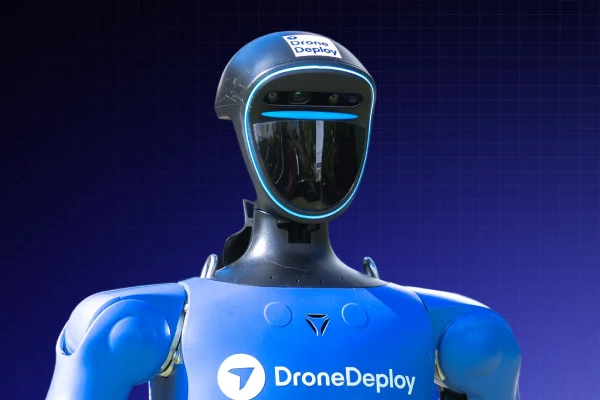Optimize Disaster Relief Efforts with Drone Insights

Quick Summary
In early 2020, helicopters dropped thousands of gallons of water on the Australian bushfires. Soon after, disaster response teams deployed drones to scan destroyed structures and facilitate rescue operations. This marked an important moment for the drone industry, as real applications for the technology were put into practice - with big results.
From public safety departments to private and humanitarian organizations, thousands have leveraged the benefits of drones and other robotics to support their disaster relief efforts. These unprecedented insights into unfolding situations also enable law enforcement, emergency responders, and emergency management teams to locate missing persons, identify survivors, and proactively monitor future threats.
DroneDeploy’s all-in-one solution is revolutionizing how teams handle natural disasters. Let’s explore further.

Live Streaming and Live Map Analysis
DroneDeploy’s Live Stream provides real-time drone video for incident response and remote collaboration. This allows disaster management teams and emergency responders to view a secure video stream remotely, and get vital insights into the unfolding situation. Those first on the scene can send a link to the appropriate parties for immediate context to missions - facilitating collaboration while also improving situational awareness and response times.
Live Map similarly powers real-time insights in your field with nearly instant data capture and reporting. This enables users to scour hundreds of acres of land via high-resolution, interactive maps. By eliminating the need to physically walk through each section, teams can focus on analysis and victim identification - aided by annotations and comment sharing.
Thermal Imagery Visualization
Drones equipped with infrared cameras or sensors can visualize temperature range variability, allowing for thermal map generation within DroneDeploy. Finding a person’s heat signature is the first step to rescue and recovery. The appropriate drone application provides this critical viewpoint by peering through smoke, fog, darkness, and vegetation to find victims. With its unlimited viewpoints, seemingly infinite degree of insights, and precise documentation, drone technology has already proven essential for locating survivors in the wake of natural disasters.

3D Maps and Models with DroneDeploy
In the event that rescuers have more time, 3D maps and models aid in planning proper escape routes and evacuation procedures. Seasoned emergency response teams regularly predict areas most vulnerable to natural disasters and flooding. Having a drone perform structural analysis and infrastructure inspections further reduces the damage done later. Analyzing at-risk buildings and infrastructure is more straightforward with a 3D model to decipher cracks, leaks, and other damage.
In the aftermath of a disaster, these maps can monitor levees, bridges, roads, and powerlines, some of the most vulnerable structures to these events.
Near-Immediate Incident Reporting
DroneDeploy is the only complete solution on the market, meaning that the software is useful before a disaster strikes but also throughout all search and rescue operations.
In the post-disaster phase, one of the essential issues drones aid in is incident reporting. In the days, weeks, or months following an incident, drone technology helps document clean-up efforts and response progress after a fire, flood, or mudslide. The view from an unmanned aircraft identifies the places hardest hit and pinpoint those impacted in difficult-to-reach areas. This type of referenceable information and historical record-keeping is imperative for preventing inadequate disaster response in the future and ensures a quick and informed search and rescue plan moving forward.

The Benefits of a Drone Data Solution
Drone data gives emergency response teams unparalleled insights to inform and stage a rescue mission. Whether finding victims and missing persons with a bird’s-eye view, planning a recovery operation, live-streaming the incident, or documenting the results, DroneDeploy can help your organization streamline its processes. In an emergency, these tools are lifesaving.
Drone technology is also less expensive than traditional search and rescue methods, requiring significantly fewer human resources. For example, The National Parks Service spends millions of dollars each year on search and rescue missions, excluding the cost of hundreds of thousands of workers. Eliminating some of these costs could lead to more resources and effort focused on proactive, preventative measures.
Disaster Relief Australia
Our DroneDeploy.org partner, Disaster Relief Australia, uses our software to map the areas most impacted by natural disasters and utilizes the program’s capabilities for search and rescue missions. Aerial Damage and Assessment Team Manager, Brent Hoade uses DroneDeploy to find new opportunities for relief, and provide quick, accurate data to the appropriate authorities while minimizing costs and effort. During the immediate aftermath of Indonesia’s catastrophic earthquake and tsunami in 2018, Disaster Relief Australia flew 42 missions, capturing 6,000 images over 140 acres of land. This data quickly identified fallen structures and jump-started rescue operations within 24 hours.
How to Get Started with DroneDeploy
DroneDeploy has worked with hundreds of organizations like yours to bring drone technology to their teams. We know how to assist your search and rescue efforts in every stage of the process, from identifying at-risk areas to retrieving survivors.
Interested in learning more about drone technology in disaster relief? Download our eBook on reshaping emergency response with drone data, or cut right to the chase, and contact us.
FAQ
Related articles
Ready to manage your data from the very start?
Book a quick call to see how DroneDeploy streamlines capture from construction through building ROI.
.svg)
.png)


